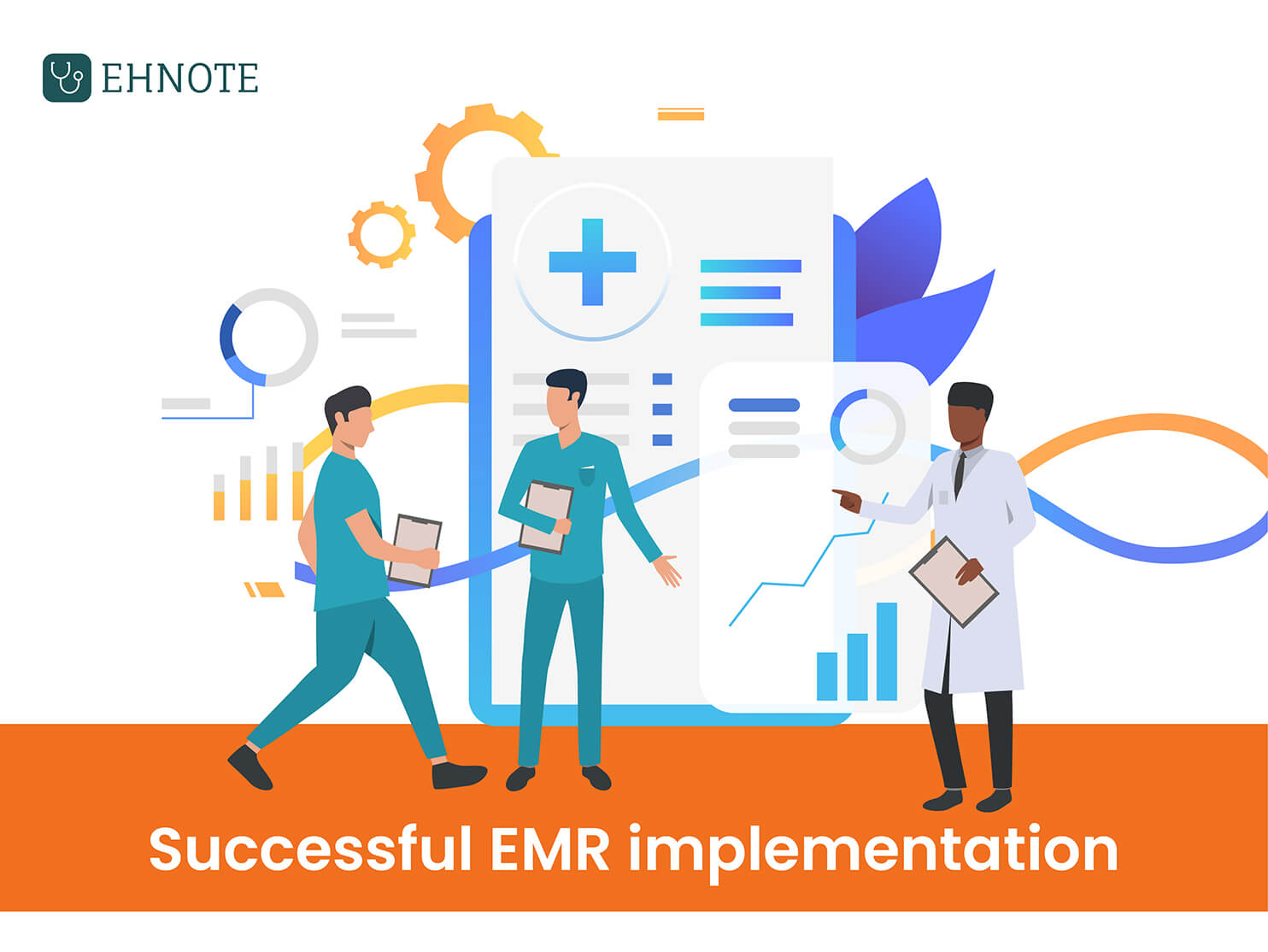Top 10 steps to Successful EHR Implementation

Electronic Health Record or EHR is gaining popularity across the globe with the advancement in technology. With paper documents rapidly becoming obsolete today, EHR implementation has become a necessity rather than a choice for healthcare service providers. Implementing EHR is a multi-step process that influences all staff members providing healthcare services.
The top ten steps required for successful EHR implementation as a patient data management system includes-
-
Setting up the necessary infrastructure
Before an EHR system is implemented, it is necessary to evaluate the financial and employment status of the firm. A strong team of staff members such as nurses, physicians, medical assistants and administrative staff should be willing to learn and teach EHR skills and be able to identify challenges along the way.
-
Setting the goals and assigning the roles
EHR implementation over the long term should begin with setting up goals that need to be fulfilled within a timeframe. These goals should take into account the present and future impact of the implementation of EHR on the concerned healthcare service provider/hospital. Once the goals are set, roles can be assigned to each member of the staff with clear guidelines on what needs to be done further.
-
Cost factor
Cost for EHR implementation is an important factor that needs to be considered especially for healthcare service providers in developing economies like India. The cost of EHR will depend on the size of the implementation and the expectation from the solutions. An upfront pricing model for a good patient & clinic management software may cost $100k + 3-5% AMC/YR, Pay-per-use models for solutions with similar functionalities may limit your outgo per month to as little as $2000. Nevertheless, they may be some EHR and practice management software that may be available for less.
-
Having training programs in place
Extensive training is necessary for ensuring successful EHR implementation. As such, hospitals/clinics should create a training plan so that all the physicians, medical staff across the spectrum can gain knowledge and skills for using EHR successfully when it is ready for its launch.
-
Finding the best equipment
When implementing the EHR, ensure that the security measures are met by putting in place the best equipment/systems without any violations of the HIPAA regulations. You can work with your health IT vendor like EHNOTE to ensure that the patient data management system is compliant with these regulations.
-
Consider the patient treatment room layout
As an EHR program requires electronic data entry, the room layout of the hospital/clinic can have a substantial impact on patient engagement and satisfaction. The patient and physician/medical staff engagement can be fruitful by using the “triangle of trust” analogy where the patient, physician and computer form a virtual triangle allowing the patient and physician/medical staff to interact with each other.
-
Picking up a good EHR software
After the needs of the healthcare service provider or hospital/clinic are assessed properly, picking a good EHR software company such as EHNOTE becomes the next important step. The concerned software vendor should be obliged to install the software such as healthcare CRM and provide training to all the medical staff/physicians about using the new software.
-
Create workflows
It is vital to establish solid workflows before EHR implantation to reduce the amount of stress that the medical staff or team will face. Inefficient workflows including the insufficient number of staff members who are well-trained and ready to use the EHR will aggravate issues during the implementation process.
-
Deciding on launch approach
Launching and rolling out the selected EHR system can be done in two ways. One is the Big Bang approach that minimizes the time spent in managing paper records as well as the new EHR system at the same time.
The disadvantage of this approach can be very disruptive and small problems can seem monumental. The other approach is to implement EHR incrementally such as rolling out the EHR in specific sites or departments first and then introducing the program to the rest of the hospital/clinic later.
-
Making revisions and improve the software
After the successful implementation of EHR, it is important to gather feedback from the users to continually improve the software following the changing needs of the healthcare service providers/hospitals & clinics. Regular upgrades as and when necessary will keep the EHR system from going obsolete.
Implementing an EHR is a multi-step process that requires advanced planning and by using, the above-mentioned steps will help in the successful integration of your EHR system.
